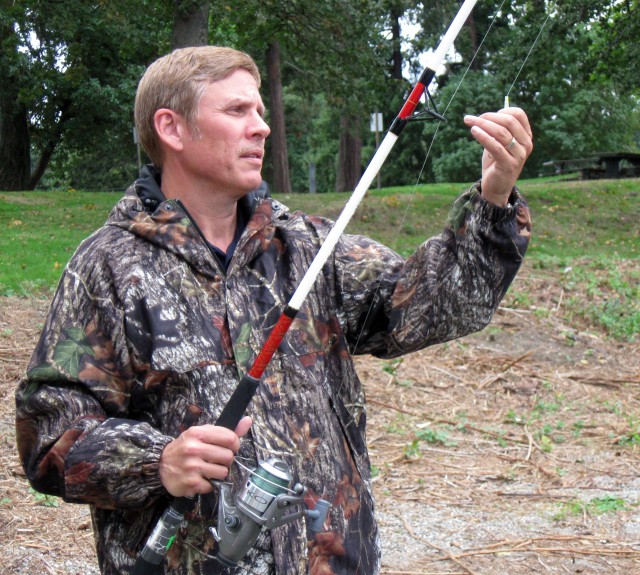Despite the constant burning, like acid on his right arm, Doug Duval gets out of bed every morning and pushes through his day like somebody who\'s not in a constant battle with pain. That's been his routine for the past two years, ever since he decided to mentally fight back against his complex regional pain syndrome, brought on by a bad parachuting jump two years prior. "I woke up one morning, and I just told myself that the pain is never going away," said Duval, a human resources assistant for the Fort Lewis Warrior Transition Battalion's Alpha Company. That perseverance makes Duval one of the rare Veterans who is being considered for return to duty after being put on the Army's temporary disability retired list- in fiscal year 2008, only about three percent of Soldiers were found fit as result of their TDRL re-evaluations, according to the Army Physical Disability Agency. It's been a long trek, with both hills and plateaus of progress, since his injury. As an active Reserve Army recruiter, Duval's career had put him in Kaneohe, Hawaii, where he jumped with the U.S. "Golden Knights" parachute team in 2005 - an event that would change his life. "The man behind me kinda landed on my neck, and I felt a tweak in my neck," he said. That 'tweak' was but a small foreshadowing of what that bad jump would bring two months later; Duval woke to a searing pain on Aug. 1, 2005, when the disc slipped and the nerve between his 5th and 6th vertebrae was crushed. "It was like getting stuck with a knife," he said of the crushed nerve that caused his CRPS- a rare illness that in his case nearly paralyzed his right arm. A surgery the following month helped with the slipped disc, but the pain became more severe; he was diagnosed with the syndrome 45 days later. "I felt my life was ending," Duval said. His severe pain changed his status from award-winning Army recruiter to a homebound patient; his wife became his caregiver. "He was always on medications, so we had to work around that all the time; he was in a different state of mind," said his wife Ruby. Their youngest boys, 11 and 14 at the time, couldn't understand what was wrong with daddy, and neither could Ruby at first. She, like Duval, had never heard of the syndrome, and had to constantly read up on it to comprehend it. While the family learned to cope with a syndrome that has no cure, Duval also went through the Army's medical evaluation board, resulting in his TDRL rating; the 'temporary' aspect gave him the slim hope of returning to duty someday. A nerve stimulator inserted into Duval's back in September 2007 somewhat lessened the pain, but its constant nature remained. Once again, his Family served as a source of inspiration to take control of his pain, and his life. "I had to sit in a chair, and my granddaughter was put in my lap; I couldn't pick her up. It's things like that that make you fight to beat something," he said. Now, "he might be having a bad day, but he won't show it," said Ruby. Duval went back to work, joining the WTB staff in October 2008, and once again began spending free time golfing and fishing. His chances of returning to active duty are high-an MEB said he meets Army retention standards, and recommended that he returns to duty; after a physical evaluation board reviews his records, he'll need to meet with a recruiter to find his next military job. "If I get back in the military, it means I fought and not maybe beat it, but controlled it," he said. He'd like to work once more in retention, maybe even in the WTB; he'd like to influence Warriors to not give up, no matter how tough it gets. "You have to make the decision that it's not going to beat you down anymore," he said.
Temporarily-disabled veteran looks to rejoin Army
By Suzanne OvelSeptember 24, 2009


Social Sharing